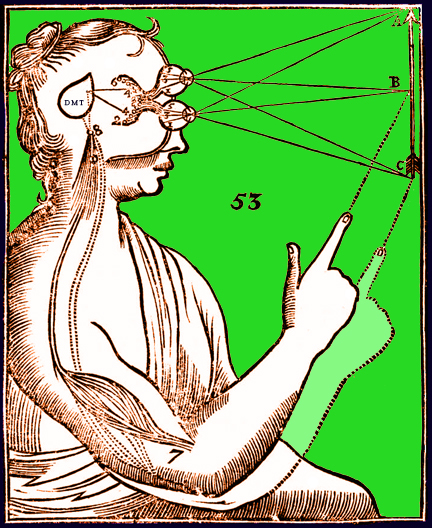The Basics of Dream Interpretation
What is a Dream, really?
What if someone asked you what a dream was? What would you say? Are dreams merely reflections of our past experiences and memories that serve as simple reminders of what we've experienced? Do dreams have any merit and do they serve a purpose? What IS a dream, really?
Let's start with the basics. You go to sleep at night and you have flurries of images and situations of all different contexts pass through your unconscious mind. You might dream that you're flying, that you're bouncing across the Hudson river on gelatin floaties or you might be eating chocolate pudding in a white room similar to that seen in The Matrix. Whatever you dreamed of, it can be given a meaning; and there are those who believe that dreams have inert meanings of their own.

What Do Dreams Mean?
Well, you could ask Carl Gustav Jung and he would tell you that some dreams are merely the projection of internal urges; and some, are symbolic messages sent from the collective unconscious, a term coined by him. Now I know that sounds highly interesting but we'll get into it later; now I'll talk about another man that you've most likely learned about in high-school.
His name is Sigmund Freud, and he'd give you an explanation for the use of a dream that would be a little less spiritual and a bit more egocentric. Maybe you've heard of him and some of his real, out-of-the-box psychological theories. The Oedipus Complex for example... OK, anyway, unless you're dreaming about that, we'll stay on topic.
Both of these gentlemen could agree that dreams hold a symbolic significance; but when the discussion came to exactly how this symbolism is interpreted, that is when there were some disagreements. Freud believed the symbolism pertained strictly to the person in ways that would protect the dreamer from harm during the release of subconscious imagery and repressed urges, because the hidden shadows of the subconscious can be quite shocking. Jung, on the other hand, believed that these symbols were to be translated from a riddle of images to a sort of, cosmic guidance that was to be used towards the betterment of the dreamer's personality. Now, this all sounds kind of SciFi but so did the idea of the Earth revolving around the Sun at one point in time. (Thank Copernicus for straightening that out for us!) Personally, I think both scholars, Jung and Freud are correct; but only in relation to the individual being psychoanalyzed.
Even to this day the exact meaning of a dream will not come to an objective, scientific conclusion for psychoanalysis and dream interpretation have many different variables that pertain to the history, experiences, opinions, biases and knowledge of the dreamer. If you're attempting to interpret your dreams for symbolic meaning, it's good to know what you're getting into beforehand. A strict observance and respect must be paid due to mythologies, symbols and personal experiences of the dreamer and their dreams before any interpretation can be accurately made. Speaking of which... that brings us to our next topic!
How Can A Dream Be Interpreted Accurately?
…when someone tells me a dream … [I have made a rule] to say first of all to myself ‘I have no idea what this dream means’ then I can begin. C.G. Jung Collected Works 8: 533 [1]

Sigmund Freud coined the term psychoanalysis, but Carl Jung really advanced the study of dream interpretation, though both men, obviously, had influence in both fields. When interpreting dreams, C.G. Jung, stressed that a dream should be looked at from every different angle possible. Confused? If so, what he meant is, that symbols can mean many different things according to region, religion, cultural background, etc. He knew it was important to be able to understand where the individual being analyzed stood on these topics and once understood, a more accurate interpretation could be commenced upon.
For example, if the United States flag could be either a symbol of alliance or of an enemy in a war. A crucifix could be a symbol of purity or of disdain in some sects. The pig could be seen as a delicious animal or a dirty beast; and so on. Jung knew it was important to take every angle and possible variable into account and then apply it as accurately and as practical as possible. This of course, couldn't be done unless the psychoanalyst becomes completely unbiased and sheds his or her opinions to the side, almost replacing his or her Self with an observant, non-opinionated, personality.
A lot easier said than done.

What Steps Can Be Taken to Interpret a Dream?
- Keep a journal and a pen by your bedside so you can quickly record a dream.
- Review your dreams and write down all that you remember about the dream in your journal.
- Look over the dream content and point out any symbolic and/or meaningful events that stand out to you.
- Take note of these meaningful events and symbols.
- Watch for patterns in #3 and #4. Do these symbols repeat? Do the meaningful events happen at similar points in time in your dreams? In similar contexts?
- Take note as to how these symbols and meaningful events pertain to your conscious life. (This is easier once you notice patterns after several dreams)
- Connect the dots between your inner dream world and outer conscious world
- Take note of characters that show up in your dreams and if they show up in other dreams. Take note of their attitudes, demeanor, intention, etc. Pay close attention because dreams are tricky! The antagonist can sometimes seem as a protagonist; and the protagonist can sometimes seem like an antagonist!
- Context is key to making things easier to understand.
- Always try to see your dream-meaning from different angles; and think about how those angles may apply to your conscious life. This helps you maintain an open-mind which helps with accuracy in dream interpretation.
- There is no black and white in the dream world!
- Are there recurring events? Emotions? Characters? Problems or situations? Challenges that the dreamer or another character has to accomplish? Pretty much anything that repeats throughout multiple dreams.







